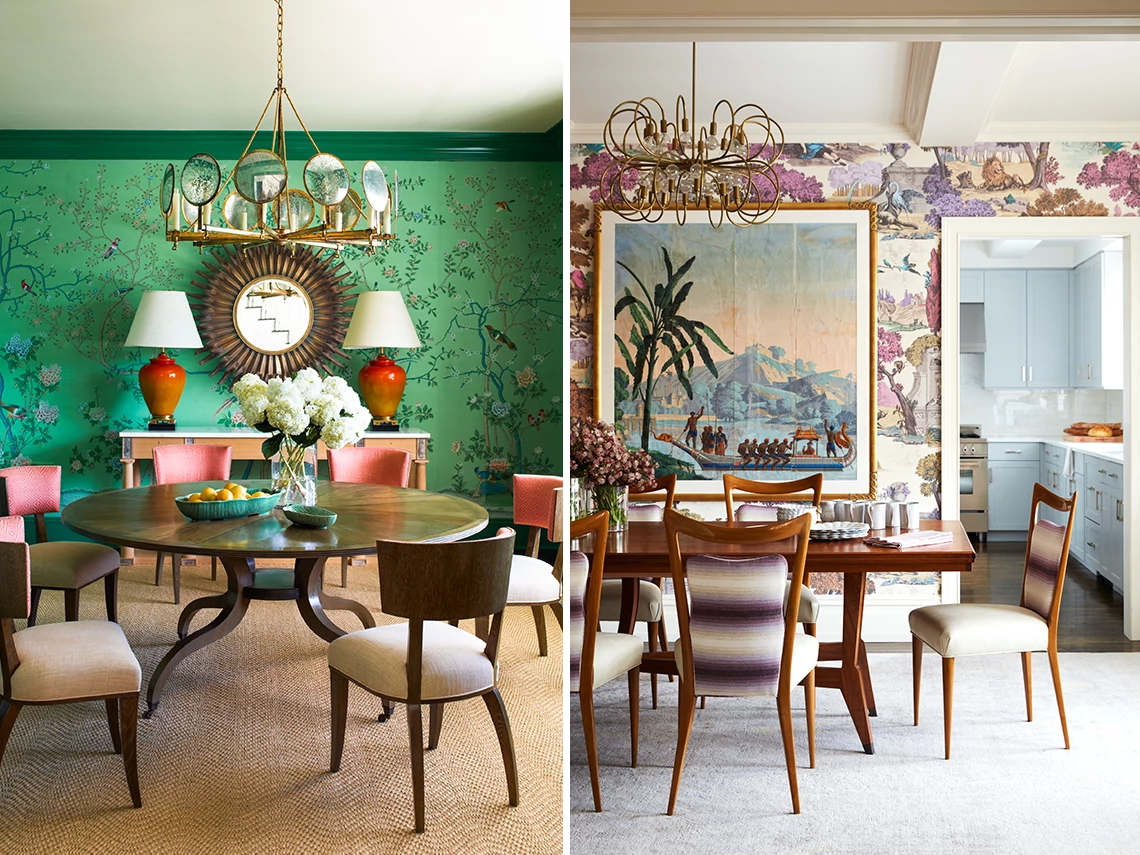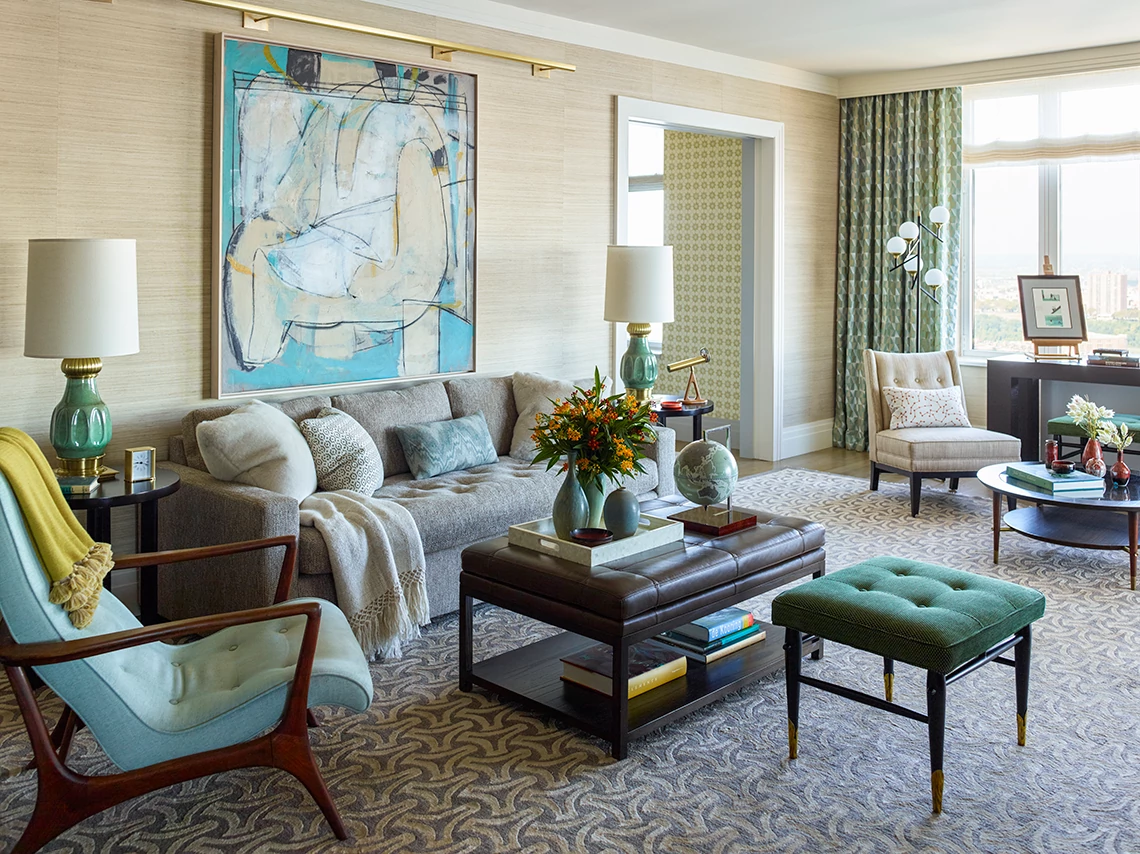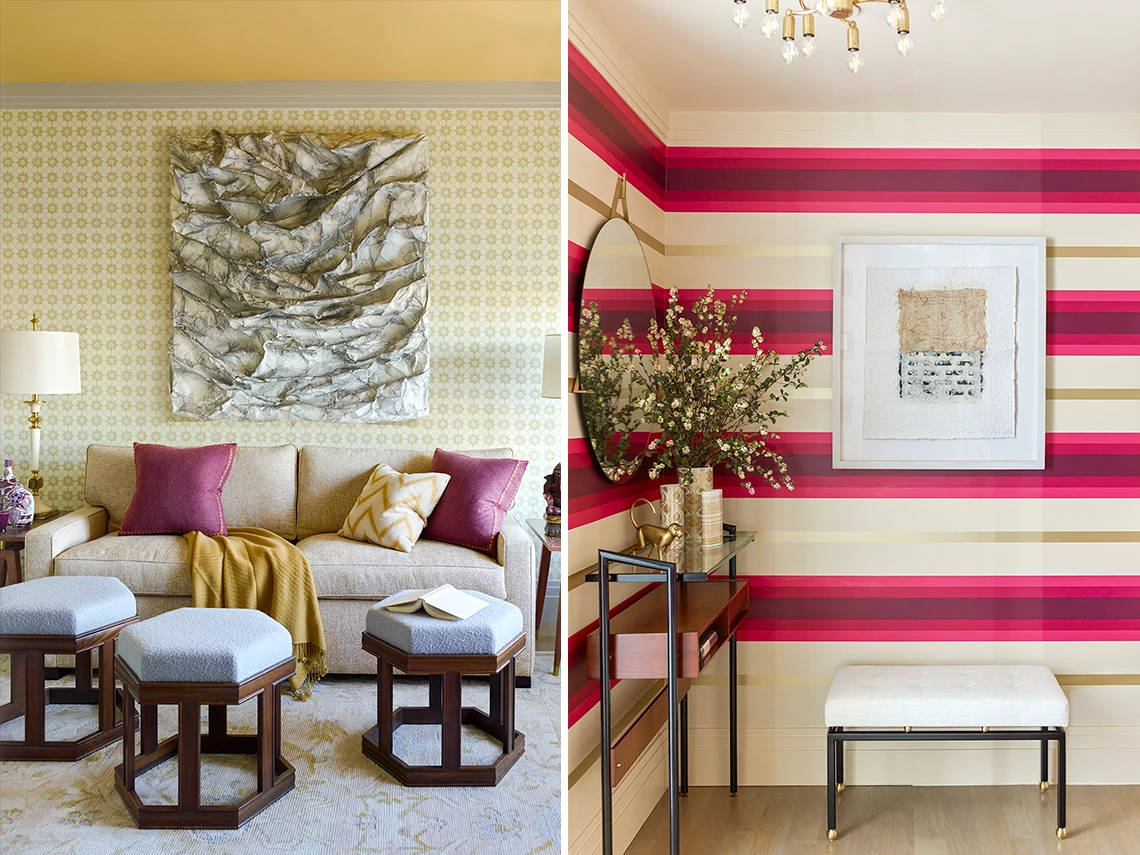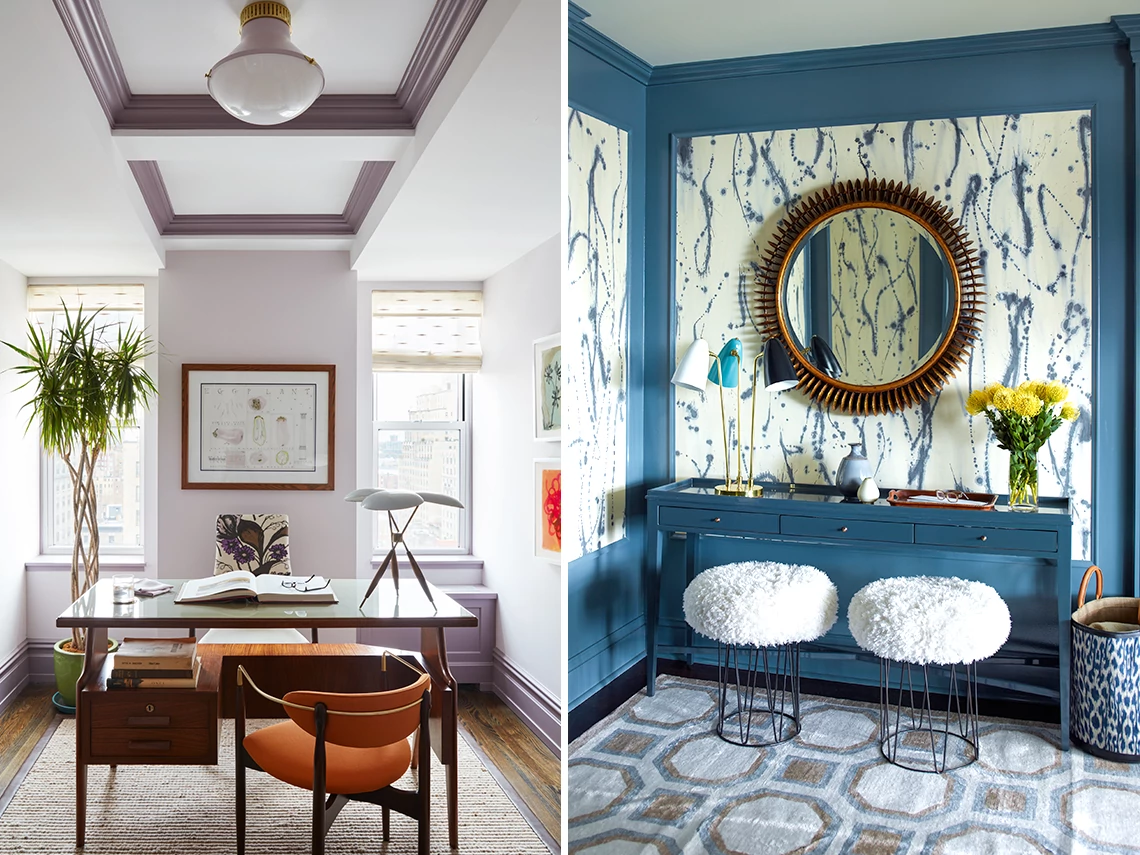AARP Hearing Center


If you scroll through TikTok or Instagram, you may have noticed that home decor trends are swinging toward the whimsical: Walls are full of mismatched art, rooms are getting bright and furniture is getting bold. The dopamine decor aesthetic is the latest interior design trend to hit social media, and creators are showing how they’ve infused their homes with it: rainbow doorways, hanging disco balls, chile pepper drawer pulls, displays of collectible items. To some, it can seem cluttered and overwhelming, but if you personalize it, it can bring you a boost of joy.
“As we get older, we’re a little more comfortable with who we are,” says Gideon Mendelson, the creative director of Mendelson Group, a New York City-based interior design firm, “we have a little more experience. Hopefully that means we’re willing to take some more risks. And I think that that lends itself to this trend. Let’s take some risks. Let’s have some fun. Let’s get our dopamine fix.”
How do you get that jolt of joy? We asked medical experts to explain how dopamine works for older adults and consulted interior designers for tips on making your home a little more happy.
Why do older adults need dopamine?
Dopamine is a chemical in our body that contributes to emotions and is involved in movement, learning, cognition and memory, says Christopher Norman, a geriatric nurse practitioner who works within Medicare’s Program of All-inclusive Care for the Elderly (PACE) in central New York. Dopamine is often associated with our pleasure centers, and it’s typically known as the “feel good hormone.”
Norman says that as people age, “lots of things start to slow down a bit,” including dopamine production. After 45, our dopamine levels decrease by 5 to 10 percent each decade, he says. Some medical conditions older adults are at risk for, such as depression and Parkinson’s disease, are linked to low levels of dopamine.
Can a room of color and whimsy actually boost dopamine?
Some ways to stimulate dopamine, even as we age, include living a lifestyle full of physical activity, social interaction, cognitive activity (learning) and emotional activity, Norman says. Dopamine decor is tied to color therapy, an alternative medicine treatment that claims the power of color can support our moods, emotions and general well-being. Though there is no science behind it, Norman says there still could be some benefit. Being around the colors and environments that you enjoy will contribute to your perception of having a better quality of life, he says.
Dopamine decor is about how you respond emotionally to the aesthetic of your home, says Noz Nozawa, principal designer for Noz Design, an interior design firm based in San Francisco.


“It’s not about whether it’s blue mixed with red, mixed with checkers, mixed with paisleys,” Nozawa says. Instead, ask yourself, “Does this thing boost my mood? Do I love it? Does it make me happy? If the answer is yeah, then you put it in your home.”








































































More From AARP
6 Chic Ways to Use Plants in Your Home Decor - and Why You Should
House plants can improve your health, happiness and home
5 Affordable Home Design Trends for a Fresh Look
Consider new styles of wallpaper, furniture and texture
Grow Your Own Outdoor Oasis
Helpful tips for cultivating the yard of your dreams
Recommended for You